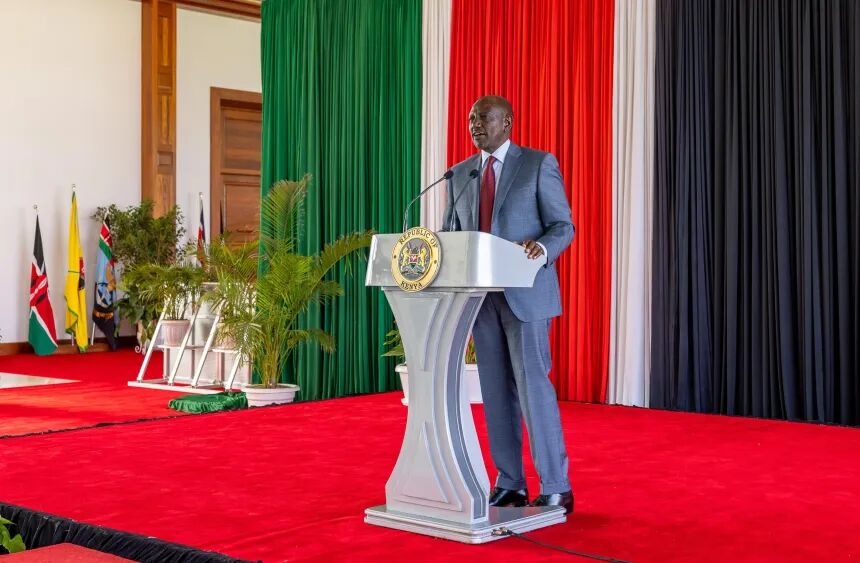The world’s tropical forests, long regarded as a vital line of defence against climate change, vanished at the fastest pace on record last year.
New satellite data show that an estimated 67,000 square kilometres of old-growth forest an area roughly the size of Ireland was lost in 2024. That’s equivalent to 18 football pitches disappearing every minute.

For the first time on record, fires not farming were the main cause. And the Amazon bore the brunt, scorched by its worst drought in modern memory.
A System in Collapse?
“This is frightening,” said Professor Matthew Hansen, co-director of the GLAD laboratory at the University of Maryland, which produced the analysis. “We’re watching a system under pressure start to fall apart.”

The Amazon’s transformation is no longer just a fear, he said. “We may be witnessing the early stages of what scientists call ‘savannisation’ where dense rainforest dies back and gives way to dry, open savanna.”
The warning follows a separate study released last week that predicted significant dieback in the Amazon if global temperatures breach the 1.5°C threshold set under the Paris climate agreement.
Such a shift wouldn’t only devastate wildlife. It would also tip a major carbon sink into reverse.
For years, the Amazon absorbed more carbon dioxide than it released. Now, as trees burn, that equation is changing. The loss of tropical forest in 2024 released an estimated 3.1 billion tonnes of CO₂ roughly equal to the annual emissions of the European Union.
Fire and Drought Feed a Dangerous Loop
Many forest fires are deliberately set to clear land for cattle and crops. But the 2023–2024 El Niño event, combined with long-term climate warming, created tinderbox conditions. Drought parched the soil and shrivelled vegetation, making it easier for flames to spiral out of control.

Brazil and Bolivia were hit hardest.
“We’re entering a new phase,” said Rod Taylor, forest director at the World Resources Institute (WRI), which co-authored the new report. “It’s not just agriculture now. Fires are being supercharged by climate change itself and that’s a dangerous feedback loop.”
A Flicker of Hope in Southeast Asia
Not all the news was grim. In Southeast Asia, primary forest loss slowed particularly in Indonesia, where deforestation fell by 11% compared to 2023.

That success came despite drought, and experts credit strict “no burn” policies and stronger enforcement.
“Indonesia serves as a bright spot in the 2024 data,” said Elizabeth Goldman, co-director of WRI’s Global Forest Watch. “It shows what’s possible when governments commit to action.”
Gabriel Labbate, head of climate mitigation at the UN’s forest programme (UNREDD), who was not involved in the report, agreed: “Political will is a key factor. Without it, progress just isn’t possible.”
Other countries, including Brazil, have made similar gains in the past, only to see reversals when political winds changed. Brazil’s deforestation rates began rising again after 2014, when environmental protections were rolled back.
“You have to win always and forever,” said Prof Hansen. “It’s not enough to protect the forest for a few years. It needs to be permanent.”
All Eyes on COP30
This year’s UN climate summit, COP30, will be held in the heart of the Amazon. For researchers and campaigners, it’s a chance to push forest protection to the top of the global agenda.

One idea gaining traction is to pay countries for preserving forests a form of climate finance that flips the current incentive structure.
“Right now, there’s more money to be made chopping forests down than keeping them standing,” said Taylor. “We need to change that.”
The details of such schemes remain up for debate. But momentum is building ahead of COP30, where world leaders will be under pressure to act.
A Vanishing Shield
Tropical forests store hundreds of billions of tonnes of carbon and support the richest biodiversity on Earth. Their destruction doesn’t just raise emissions. It weakens the planet’s ability to cope with climate change.
And while this year’s figures represent just one data point, the trend is deeply worrying.
“It fits a pattern,” said Taylor. “And unless we act fast, we risk losing one of our greatest natural defences possibly for good.”




















